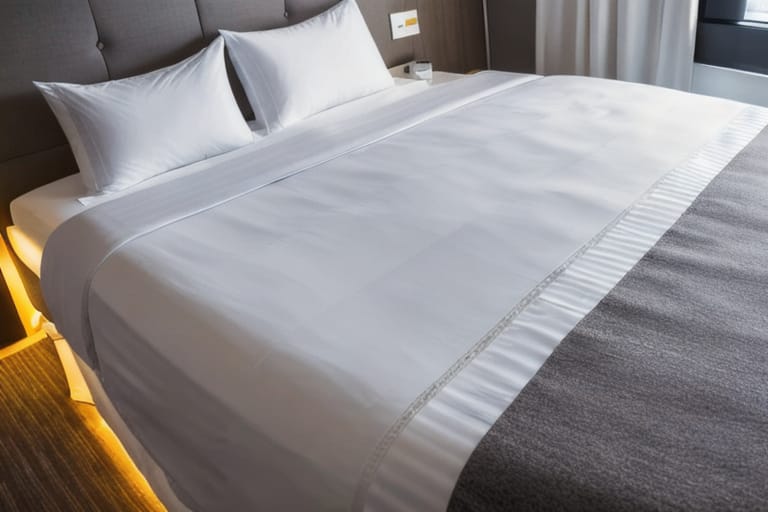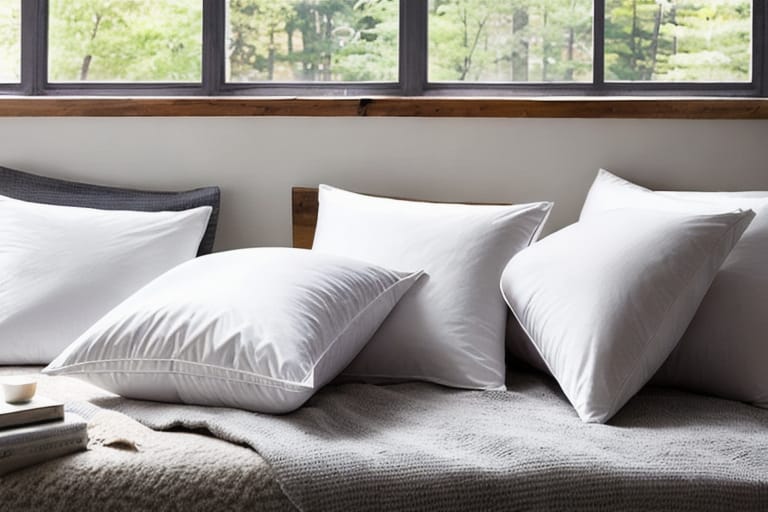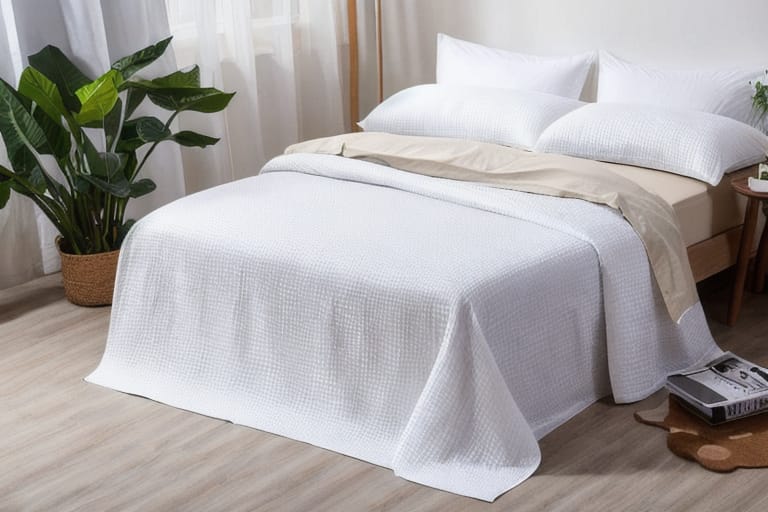When it comes to selecting the perfect comforter, breathability is one of the most important factors for a cool and comfortable night’s sleep. But are down comforters breathable?
Down comforters are known for their fluffy texture and top-notch warmth. But what about letting heat and moisture escape? In this comprehensive guide, we’ll explore everything you need to know about the breathability of down, from fill power to thread counts.
What Makes a Comforter Breathable?
Breathability refers to how well air and heat can circulate through a comforter. A breathable comforter allows body heat and moisture to dissipate, preventing you from getting too hot while you sleep.
Several key factors impact breathability in down comforters:
- Fill power – The loft and quality of the down impact air circulation. Higher fill powers tend to be more breathable.
- Shell fabric – Breathable outer shell fabrics like cotton and linen allow more airflow.
- Weave and thread count – More open, loose weaves promote breathability better than thick, tight weaves.
Why Breathability Matters in Comforters
Why is breathability so crucial for quality sleep? When you don’t have a breathable comforter, heat and moisture get trapped inside. This can lead to:
- Tossing and turning due to overheating
- Night sweats that disrupt sleep
- A lack of temperature regulation
- An increased heart rate, leads to poor sleep
Breathable down comforters provide a cooler, drier, and ultimately more comfortable sleeping environment by allowing body heat to properly dissipate.
Factors That Impact Down Comforter Breathability
Now that you know why breathability is so important, let’s explore the key factors that impact the breathability of down comforters.
Fill Power
- Fill power measures the loft and fluffiness of down insulation.
- Higher fill powers (600-900) have more space between down clusters, allowing for better airflow.
- Lower fill power down (300-600) is more tightly packed with less space for airflow.
| Fill Power | Breathability |
|---|---|
| 300-400 | Low |
| 400-600 | Moderate |
| 600-900+ | High |
As shown in the chart above, high fill power down around 600-900+ tends to be the most breathable option.
Shell Fabric
The outer shell fabric of the comforter also impacts breathability:
- Cotton shells are very breathable, promoting airflow.
- Linen is also excellent for ventilation and heat dissipation.
- Polyester and microfiber are less optimal for breathability.
For the best results, look for a cotton sateen or linen shell.
Weave and Thread Count
The weave and thread count of the fabric also influences airflow:
- Lower thread counts around 200-400 allow more space between threads for ventilation.
- Higher thread counts above 500 or 600 can restrict airflow unless the weave is loose.
- Tightly woven fabrics inhibit breathability.
- Looser weaves improve it.

Down Alternative vs. Down for Breathability
If you can’t decide between down and down alternative comforters, breathability may help tip the scales.
Down alternative comforters made from polyester fibers don’t breathe quite as well as natural down. The materials tend to trap heat instead of letting it escape through the fibers.
| Type | Breathability | Benefits | Drawbacks |
|---|---|---|---|
| Down | High | Superior ventilation, best for hot sleepers | Allergies, expensive |
| Down Alternative | Moderate | Affordable, hypoallergenic | Traps heat, less ventilation |
While down alternative delivers warmth and comfort at an affordable price point, down still reigns supreme for keeping cool and dry all night long thanks to unparalleled ventilation. Those seeking optimal breathability should opt for the real thing.
Best Time of Year for Down Breathability
When deciding between your assortment of quilts, comforters and blankets, keep the season in mind!
Warm weather bedding calls for maximized airflow from breathable layers. Switch to your lightest, most airy down comforter during summer for superior ventilation. The hottest sleepers may even enjoy the breathability of a down comforter with a gauze shell.
During cold winter months, breathability becomes less important than enclosing warmth. Heavier down comforters trap body heat better to keep you cozy on frigid nights.
Why Down is Naturally Breathable
So why exactly does down offer such excellent airflow and ventilation compared to synthetic alternatives? It comes down to the structure of down:
Downfilling consists of tiny, 3D clusters that effectively trap heat – but also facilitate airflow between the clusters.
This springy, airy composition allows body heat to rise away from you while cool air circulates in. By keeping air circulating freely around down insulation, warmth stays evenly distributed without overheating occurring.
It’s a delicate balance that ensures you stay nice and toasty thanks to the light warmth of down along with continuous temperature regulation.
Caring for Your Down Comforter
To get the most out of your breathable down comforter, proper care is essential:
- Avoid excessive washing to maintain the loft and fill the power
- Air fluff your comforter instead of washing it when possible
- Use duvet covers to protect from dirt and stains
- Dry clean for best results instead of machine washing
- Line dry in the shade if machine drying to prevent damage
With the right care, your breathable down comforter can deliver blissful comfort for years to come! Just be sure to give your down a break to air out every now and then.

Frequently Asked Questions
Is down or down alternative better for staying cool at night?
Down is more breathable and better for hot sleepers. The structure of down allows more heat and moisture to ventilate out, keeping you cooler than synthetic down alternative.
How can you make a down comforter more breathable?
Look for down comforters with high fill power around 600-900 and breathable outer shell fabrics like cotton. Looser weaves instead of high thread counts also maximize airflow and ventilation through the comforter.
What thread count is most breathable for a down comforter?
Low thread counts between 200-400 tend to be more breathable since they have more space between fabric threads. High thread counts above 500 or 600 can restrict airflow unless the fabric has a very loose, gauzy weave.
Is goose or duck down more breathable in a comforter?
Goose down is more likely to surpass duck down in terms of breathability since it typically offers higher fill powers. But great ventilation can be found with both duck and goose down comforters as long as they have high fill power around 600-900+ fill power.
Can you use a down comforter in summer?
During hot summer weather, the increased breathability and airflow of down makes it a great option on its own or layered under lightweight summer bedding. Many hot sleepers find down combined with a breathable gauze duvet perfect for staying cool.
What’s better for cooling – down or wool comforters?
Down comforters with breathable shells circulate airflow far better than wool comforters. Wool also tends to feel heavier. So those seeking lightweight ventilation and cooling relief are better off with down comforters.
Does thread count impact down comforter breathability?
Yes, thread count impacts breathability substantially. Lower 200-400 thread counts have more space between threads for better airflow. But higher 500-600+ counts can lack breathability unless very loosely woven.








